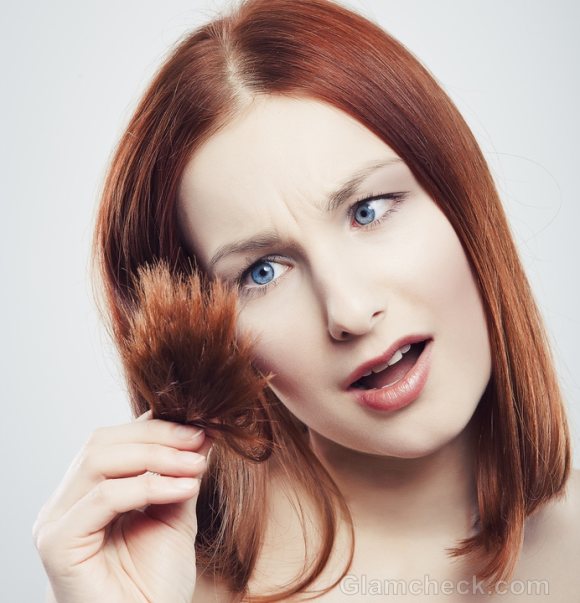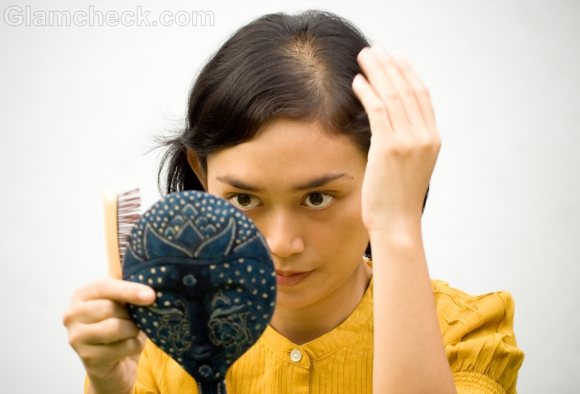Hair loss is actually a normal phenomenon. Hair grows, it falls, and new hair grows in its place. So how do you know when your hair loss is just normal hair loss or when it is a symptom of a hair loss problem? The growth cycle of hair is sometimes interrupted for a number of reasons from genetics and illness to nutrition and hair treatments. When there is an interruption in the phases of hair growth, you may experience hair loss symptoms that could worsen with time. Here are the most common hair loss symptoms that could indicate a hair loss problem or even a health condition that needs medical attention.

- Hair loss symptoms usually start with the hair thinning out even if you see no actual evidence of falling hair. It may happen very gradually and you may not even be that aware of it until you suddenly wake up one morning and realize that your hair is thinner than it was a few months ago.
- Hair gets very brittle and breaks easily.
- There are patches on your head that have gone totally bald or where the hair is thinning out enough that you can see right through to the scalp.
- Some hair loss symptoms affect the hair all over the body, not just on the head. Eyebrows that thin out without tweezing or waxing or falling eyelashes are also hair loss symptoms that indicate a worsening hair loss problem.
- But before you see these more extreme hairs loss symptoms you are bound to encounter some pretty run-of-the-mill hair loss symptoms which you may not realize are symptoms of a hair loss problem. For example, you may notice that a lot of hair falls away when you use your brush or comb. There may be so much hair loss that you have to clean out your brush or comb after each use.
- You experience so much hair fall when you wash your hair that it clogs the gutter in the bathroom.
- Your hair is so brittle that when you dry it after a wash, clumps of hair break away and are visible on your towel.
Identifying Hair Loss Symptoms
 More than half the population of the world is experiencing hair loss symptoms this very minute. And that’s a modest estimate. But different hair loss symptoms mean different things. Your hair loss symptoms will tell you exactly what kind of hair loss you are experiencing and the hair loss pattern that your are heading toward if you do not get treatment early on. Following are the types of hair loss patterns and problems that you can identify by taking a closer look at your hair loss symptoms.
More than half the population of the world is experiencing hair loss symptoms this very minute. And that’s a modest estimate. But different hair loss symptoms mean different things. Your hair loss symptoms will tell you exactly what kind of hair loss you are experiencing and the hair loss pattern that your are heading toward if you do not get treatment early on. Following are the types of hair loss patterns and problems that you can identify by taking a closer look at your hair loss symptoms.
Hair Loss Symptoms : Front and Top of Head
If you have hair loss on the front and top of your head, then your hair loss symptoms indicate androgenetic alopecia. This is commonly referred to as male pattern baldness because it affects more men than women and it is the general hair loss pattern that you see in bald men. But women can experience the hair loss symptoms of androgenetic alopecia too, although complete baldness rarely follows the hair loss symptoms in women. Eventually, as the hair loss symptoms progress, the hair on the front and top will thin and fall out altogether and only the hair on the sides above the ears and on the back of the head will remain.
Hair Loss Symptoms : Round Bald Patches
Some hair loss symptoms can indicate a problem with the immune system. If your hair loss symptoms include patches of hair falling out to leave smooth round bald spots on your scalp, then you may be suffering from a type of hair loss problem known as alopecia areata. This is when the immune system thinks that the follicles are invading the body and it attacks them, causing damage to the follicles and thus resulting in hair loss symptoms. Other hair loss symptoms of alopecia areata may include a general thinning and falling out of hair without any obvious baldness, or hair that grows but breaks off to leave little stubs.
Hair Loss Symptoms : Bald Patches/Broken Hair/Sparse Eyebrows
Although we have already seen the hair loss problem associated with bald patches, there may be another explanation for it especially if they are accompanied by other hair loss symptoms such as very thin eyebrows or broken hair. When these hair loss symptoms occur together, they are usually symptoms of a psychological hair loss problem known as trichotillomania where the patient has a compulsive desire to pull out his/her hair because of underlying psychological issues. If someone is suffering from trichotillomania, then there will be other symptoms to look out for – pulling hair out in secret, denying that there is a problem at all even though it is so obvious, or trying to hide the hair loss symptoms – which could help form a diagnosis for this hair loss problem.
Hair Loss Symptoms : Overall Thinning Hair
Not all hair loss symptoms lead to baldness. Some hair loss problems will just cause your hair to thin out to an extreme extent, in some cases making the scalp visible all over the head. The hair loss symptoms of extreme thinning of hair is usually an indication of telogen effluvium. Telogen is the last stage of hair growth in which the hair follicle is in a resting state for one to two weeks. Hair does not grow during this stage, and it falls out at the end of the telogen phase to give way to new follicles and thus new hair growth. But sometimes, for reasons unknown, there are more hairs in the telogen phase than in the growth phase. This is when hair loss symptoms will start to manifest since there are more resting hair follicles than ones that cause hair to grow. This usually sorts itself out over time though.
Hair Loss Symptoms & Rashes
If your hair loss symptoms are accompanied by rashes on the location of hair fall, or even inflammation, it may be an indication of scarring alopecia or traction alopecia. The hair loss symptoms may also be accompanied by pain, burning sensations, scarring or redness. Hair loss symptoms of traction alopecia occur when hair is pulled tightly too often into hairstyles that damage the scalp. You may start experiencing the hair loss symptoms of traction alopecia if you frequently do your hair in very tight ponytails or plaits, corn rows, or undergo hair extension treatments too often.
Hair Loss Symptoms: Around the Temples
If your hair loss is localized to your temple area, then you are most likely developing triangular alopecia. The hair loss symptoms of triangular alopecia usually occur in childhood. If hair loss symptoms of triangular alopecia occur in adulthood it will eventually be diagnosed as another hair loss problem. The hair loss symptoms of triangular alopecia progress to extreme thinning or total baldness if left untreated.
It is only once you know and identify your hair loss symptoms that you can look for a hair loss solution. If you are not sure what your hair loss symptoms indicate, set up an appointment with a hair expert or a trichologist and nip the hair loss symptoms in the bud before they get worse.
Image: Shutterstock
